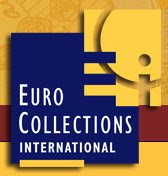
Tuvalu 2009 $1 Battle Of Cannae 1oz Silver Proof
The first coin in this series, commemorating the Battle of Thermopylae in 480BC proved to be a widely underestimated hit amongst world coin collectors, with the majority of the coin already sold out from all major distributors. ECI still has a very limited allocation available but with the release of this second coin to once again pique interest in the series, those stocks won't last long. As the series is proving to be so popular it follows that each successive release will be in greater demand than the previous, as new interest and confirmed resale value prompt more people to buy more coins.
The Battle of Cannae took place in 216BC between the army of the Roman Empire and Carthage, near the town of Cannae in Apulia in southeast Italy. The battle is widely regarded as the greatest tactical feat in military history. The Roman and allied troops equalled almost 87,000 when they decided to engage Hannibal at Cannae, and massed their infantry in a formation deeper than previous battles. Hannibal employed the double-envelopment tactic which basically split his forces into two and engaged the single line of Roman troops from both sides, completely destroying their fighting forces.
Like the first coin in the series, the Battle of Cannae silver proof is a stunning example of design and the expert colouring techniques of the Perth Mint. Featured on the reverse in glorious colour is a depiction of the furious battle, coupled with a striking relief of a Carthaginian warrior alongside one of Hannibal's 30 war elephants, famously used to move his troops across the Alps. The obverse carries the Raphael Maklouf effigy portrait of Her Majesty Queen Elizabeth II, together with the nominal face value, country and year of issue.
Each legal tender issue is struck from 31.135 grams of 99.9% fine silver on a 40.60mm flan. The coin is beautifully packaged, presented in an official Perth Mint jewel case within a full-colour outer box accompanied by a numbered certificate of authenticity.
The "Famous Battles of History" coins are being released in 2 month intervals, with the next coin honoring the Battle of Hastings in 1066 scheduled for July/August 2009. Following that will be the Battle of Balaclava (1854) and then the Battle of Gettysburg (1863) which will see out the series.
As official distributor for the Perth Mint Euro Collections International already has stocks of the Battle of Cannae Silver Proof available to order, as well as limited stocks of the first coin in the series, the Battle of Thermopylae Silver Proof.











